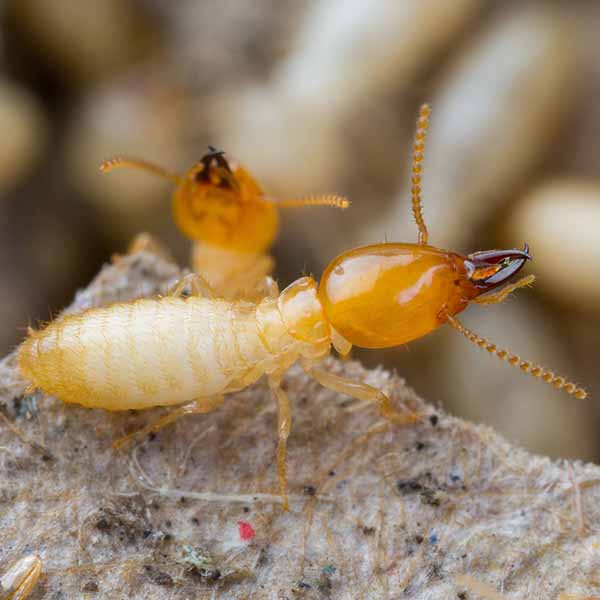Termites are the number one pest that causes damage to your home. In the US, over 600,000 homes are damaged each year with over 5 billion dollars in damage. In the Metro East, subterranean termites are common. The key to avoiding termite damage is preventative termite treatments.

Do You Need Help With Termites?
How are Termites a Pest?
All About Subterranean Termites in Missouri & Illinois
Termites forage through the ground in random patterns from their central colony, looking for cellulose to eat. Unfortunately, the most common kind of cellulose is wood, the primary construction material used for our homes. Once the foragers find some food, the rest of the workers will build feeding tunnels and start devouring the food source.
Thankfully, termites tend to focus on foraging in the top 10-12 inches of soil. This is where most tree roots, dead trees, fallen limbs and other wood products are most readily found. Termites have been known to tunnel deeper, but the majority of their foraging will take place close to the surface.
Termites aren’t afraid to climb walls, posts, pillars or even steel beams. They build mud tunnels and travel within them to remain protected from predators and to maintain their preferred environment.
Finding Termite Damage
Here are a few of the sure signs that termites have been chewing on your house:
- Mud Tubes on your foundation or in your basement
- Wood that has lost it’s structure and appears to be disintegrating. The wood will be soft with round channels or tunnels. It may also appear to be powdery.
- Bubbled paint with voids behind the paint where wood has been eaten, but the termite stopped at the paint
How to Deal With Termites in Your Home
Preventative Termite Treatments
The best offense against termites is a strong defense. Termite treatments create a zone of protection or a protected barrier around your home that prevents termites from reaching your home.
Liquid Treatments
Liquid treatments are performed by digging a trench around your home and using a strong insecticide that can’t be detected by termites. The insecticide is applied to the trench around your entire home creating a barrier around your home of treated soil.
When a termite encounters the treated soil, they cannot detect the insecticide. It’s slow acting, so when they get contaminated by the chemical and then carry the pesticide back to the colony, where it spreads and eliminates the threat.
Bait Treatments
Bait treatments are effective because the termites forage near the surface of the ground. Bait stations have cellulose material that termites adore, infused with insecticide that slowly kills termites. The termites then feed on the bait station, spread it through the colony. Bait treatments are effective because even if some termites are foraging deeper, the ones near the surface will find your bait stations and infect the entire colony, eliminating even the termites who never found your bait stations.
Check out our Termite Treatments for more details comparing liquid and bait treatments, along with pricing differences.
By the time you see them, it’s too late
Unfortunately many of our homes structures are not able to be inspected. For example, if your home has a cinder block foundation the termite may have crawled through the void in the middle of the cinder blocks and enter the wooden footing without ever being seen until they get too close to the edge of your structure and can be detected by inspection.
By the time you detect the termites, they may have already done a significant amount of damage.